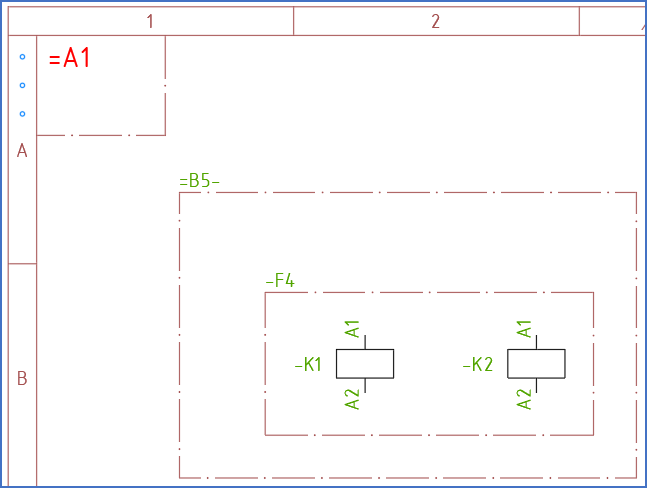|
<< Click to Display Table of Contents >> Background IEC1346 transitions |
  
|
|
<< Click to Display Table of Contents >> Background IEC1346 transitions |
  
|
IEC1346 is the international standard for item designations, or ”reference designations” as they are referred to there. It is quite extensive and offers a wide range of opportunities and variations. (The complete name of the standard is IEC81346, but in cadett ELSA we refer to it as IEC1346 for short).
In IEC1346, three so-called ”aspects” have been introduced. They can be regarded as replacements of block 1, block 2 and block 3 in the old IEC750 standard. Block 1 was there called plant (=), and block 2 was called location (+). Block 3 in IEC750 referred to the component level (–).
The three aspects in IEC1346 are:
•Function
"Function" replaces the old term "plant" in IEC750 (block 1) and is marked with an equal sign ("=").
•Location
"Location" is similar to block 2 (location) in the IEC750 and is marked with a plus sign ("+").
•Product
"Product" is a new term in this context, and is marked with a minus sign ("-") which thereby is given a meaning that is partly new. The closest counterpart in IEC750 was block 3.
In the same way as in the old IEC750 standard, multiple levels may be used. What is making this a lot more complicated than before, is that IEC1346 allows so-called ”transitions” from one aspect to another, not only once but any number of times.
As opposed to in the IEC750, you always go from higher to lower levels when you move from left to right in the reference designation.
It might look like this, for example:
=A1=B5-F4-K1
In this example, which has four levels, there is a transition from function to product between B5 and F4.
The fact that IEC1346 allows "jumping freely" between the three aspects, in any way and also in different ways for different objects in the same design, can make the situation very much different from the older standards, at least if that possibility is utilised. Separator character independent item designations are well suited to handle that situation.
According to IEC1346, the transitions should be marked in a special way in boundary boxes. A technology aimed at handling that is incorporated in cadett ELSA. It is called ”transition reduction”.

Figure 382: Please note the transition from function to product at B5.